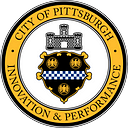Dogfooding: Implementing Lean Principles to Identify Customer Needs
In our very first blog post we talked about our approach to applying Lean and how we adopted the House of Toyota to learn what works well within municipal government. Our second post focused on the foundation of the house, particularly stabilization through identifying customer and team needs. In this post, I will take us through specific examples of how we are implementing these concepts to identify the needs of our customers and teams. In the technology world, this is called “dogfooding”, a time in which an organization uses and tests its own product. Before teaching and applying process improvement principles to all of City government, we had to apply these principles to our internal structure. To gain a better understanding of our needs and our customer needs, we started eating our own dog food.
Identifying Customer Needs
I, Srin Jagannath, am a Performance Improvement Coach and one of the leading forces of process improvement in the City of Pittsburgh. By training, I am an industrial engineer with a Black Belt in Six Sigma. Heidi (the co-author of this blog series) is the Assistant Director for the Department of Innovation and Performance. Her first step as Assitant Director was to focus on identifying the biggest needs of our customers and the Help Desk team. We already had data on our customer’s needs through the help requests (tickets) that came in through our customer support system, but it was not available to us in a format that was useful to make decisions. We worked with our Data Analytics team to build new tabs into our OTRS (ticketing system) dashboard to help us identify our customer’s needs: who they are, what they need and when they need it. Then we used the data in the dashboard to answer these important questions:
Who?
- Who are our biggest customer departments?
- How are requests coming in from these departments?
- How many days do we take on an average to resolve our customer’s tickets?
What?
- What types /categories of requests do our customers regularly ask for?
- What types/categories of tickets take longer to resolve?
When?
- When do our customers need help for different types of issues?
- What does the overall volume of customer requests look like for a day/week/month/year?
The dashboard also allows us to sort the ticket data by different date ranges, teams, departments, categories and also agents working on tickets.
This in turn helps us answer a wide variety of questions on what our customer’s needs are and how we can use this information to provide better service. For example, we learned that our lowest volume days for tickets is Wednesdays and Fridays, allowing us to reallocate some of our resources to do other important work on those days. We also learned that maintenance of equipment (PCs) is by far our largest number of requests, which has led to efforts to proactively replace equipment before it begins to malfunction.
Identifying Team Needs
The next step was to identify the Help Desk team’s needs. The lean tool used to identify team needs is called 4M which stands for Man, Method, Machine, and Material. By classifying needs into these 4 categories, we can clearly pinpoint which parts of our operations require what kind of resources for better service delivery.
First, Heidi began by interviewing the Help Desk team members to learn about their professional backgrounds, as well as current roles and responsibilities. The interviews were one-on-one conversations with team members. The information gathered from these interviews was collected using the following format to better visualize patterns.
The needs expressed fall under the 4 categories of Man, Machine, Method and Material. ‘Training’ falls under ‘Man’, ‘updated computers’ falls under ‘Machine’ etc.
The information from the interviews enabled Heidi to begin helping the team immediately. In short order, they had functioning telephone headsets, new computers, weekly training opportunities, and standard processes for fixing common problems. The team members quickly became actively engaged in identifying ways they could serve our customers better. The team came up with great ideas to proactively assess the state of computer equipment in all departments, to create a self-help/FAQs page on the internal website, and to be given the functionality to clear print queues — a common problem on networked printers. Together, Heidi and the team implemented all of their ideas and were delighted to see the improved outcomes for our customers.
In summary, through “dogfooding” we were able to experience firsthand the benefits of stabilizing our system by implementing the concepts of the House of Toyota. In the next post, we will talk about stabilizing the house further through standardization, using tools such as standard work, 5S and visual management.
Keep up with series on Pittsburgh I&P under Process Improvement and feel free to comment here with questions or concerns!

